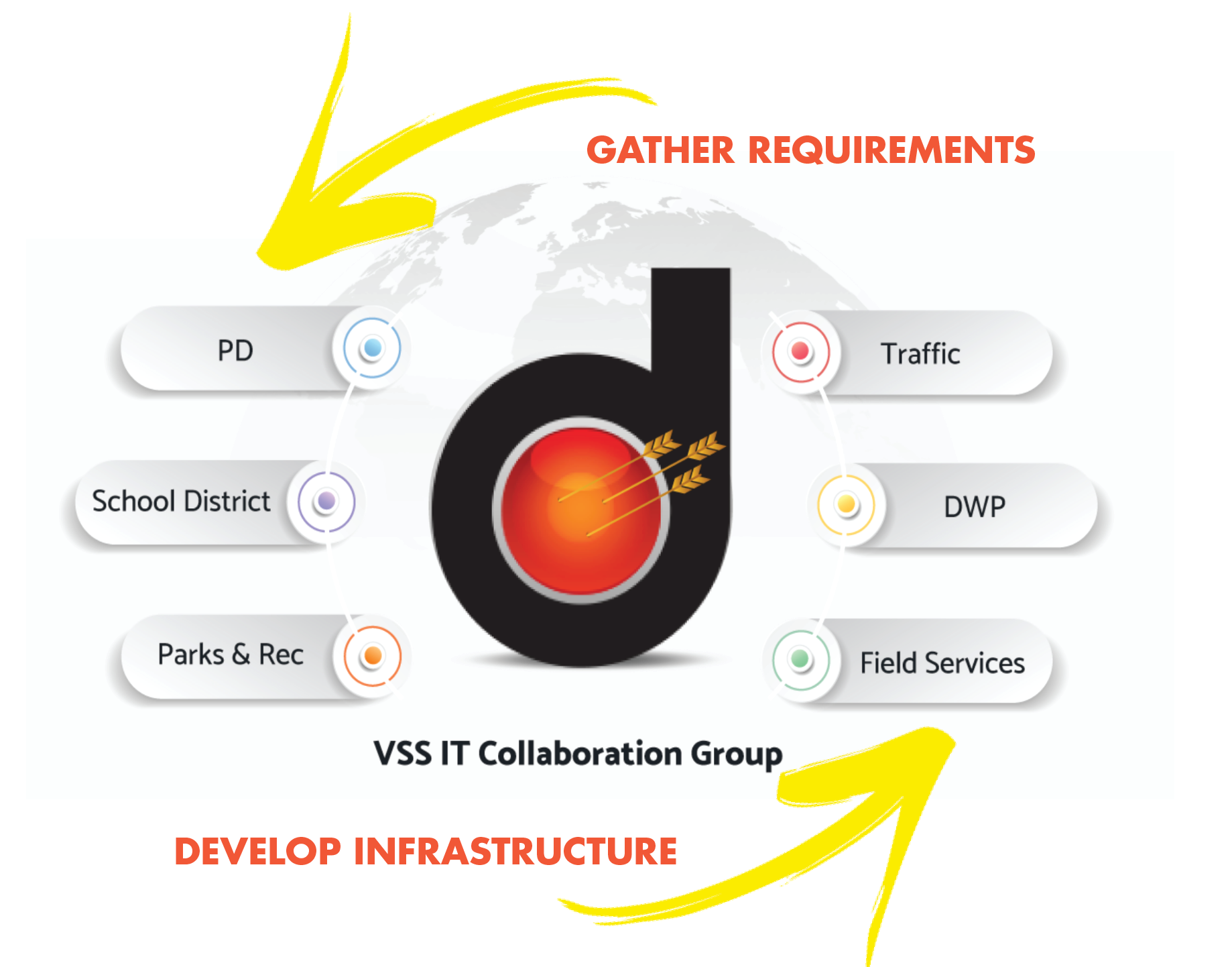Controlling Camera Chaos: Creating a Unified Surveillance Network
Cameras, cameras everywhere — but who’s watching? In many cases, sadly, it’s nobody. In a city with hundreds of cameras, they may be managed by dozens of separate agencies, all of whom are understaffed and underfunded, and therefore, the use of video surveillance is marginalized. Why not unite those assets into a powerful, cohesive network?

Smart cities are looking to integrate information technology to improve communication between citizens, agencies, and government. A quick audit of the surveillance systems in a given municipality often reveals an array of disparate assets: local departments, schools, libraries, transportation systems, hospitals, power plants, water supply, waste management and law enforcement are all likely to have engaged some form of video surveillance.
The Benefits of Working Together
These unified systems are called Public Video Surveillance Systems (PVSS). PVSS networks are often very visible, and designed by public safety officials to enhance citizen safety and quality of life. At the same time, other city departments are building out IP networks to support the services they provide. Typically traffic engineering, schools, and city utility departments build IP surveillance systems in the shadows of Public Video Surveillance Systems, and while the systems are useful, they are generally woefully underused, poorly maintained, and more often than not, abandoned due to ineffective management.
It may seem a daunting task to merge these efforts—and in truth, it is not easy—nonetheless, Leverage has helped several cities to successfully deploy a Unified Video Surveillance system. As such, each separate department:
- Shares the resources of the others,
- Reduces operational expenses, and
- Distributes maintenance and support costs.
Unified video surveillance reduces overall costs and resource consumption, while at the same time, creating the infrastructure for more reliable operation. Consolidation of resources includes the obvious surveillance cameras, but also extends to networking, power, and video retention costs. Further cost savings are realized by an overall reduction in maintenance and support—all while improving services for each individual department.

What Are the First Steps Toward Unification?
When the individual entities that make up a municipality choose to adopt mission-essential video surveillance, there is a great deal of planning to start. Some of the critical first steps include:
- Identifying stakeholders—who is going to participate?
- Cataloging existing assets—what do we already have?
- Develop requirements—what do we want the new system to do?
- Committing to a budget—what do our systems cost, and what can we afford?
Generally, the departments pool their budgets to fund a unified surveillance system. In this way, instead of requiring a single police department to find funding to purchase surveillance for the entire city, the budgets for every individual contributor are added in to cover the cost of an integrated system. In this way, they municipality gains more assets, yet streamlines management and maintenance.
Leverage can help with these steps. We have over a decade of experience designing surveillance systems for cities, agencies, and governments, and we’ve done our share of integrating existing systems, too. Our experience has taught us that there is no such thing as over planning—and a well-outlined system with defined metrics for success is easier to deploy, maintain, use, and justify.
LEARN MORE HERE: Choose a Technology Partner
Public Video Surveillance Systems provide a fundamental change that addresses the shortcomings of independently deployed video surveillance. With the proper planning of network infrastructure, and management processes in place to ensure reliable operation, it is possible to provide “Mission Essential” video surveillance services to any or all municipal departments. Correct implementation will unify assets, reduce cost, optimize processes, and improve services.
Need a referral? Give us a call or visit our YouTube site for examples of DETECT in Action.
